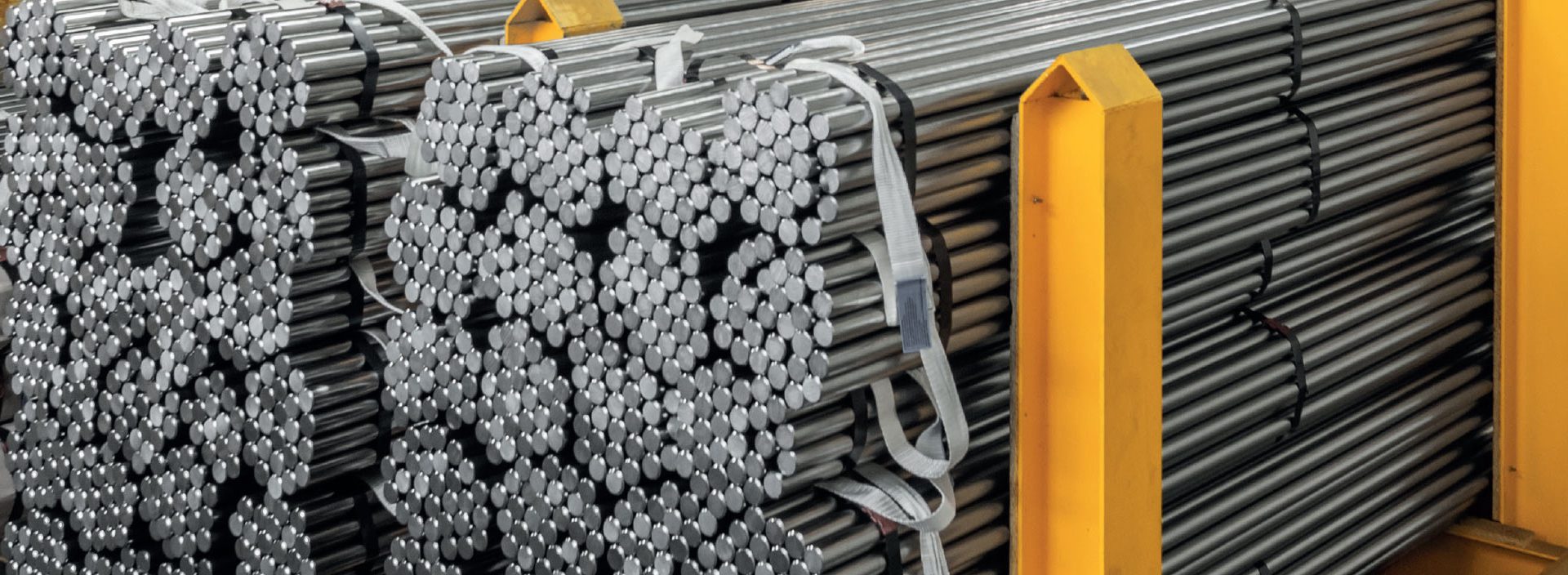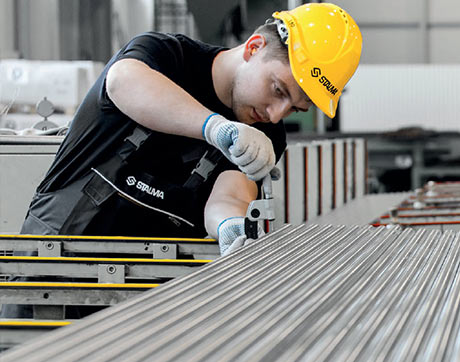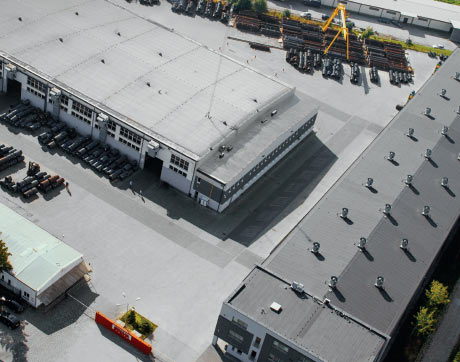Surface
Bar surfaces a) b):
- drawn – class 1
- peeled – class 3
- ground – class 4
The surface can be inspected by the eddy current testing – scope and conditions of the inspection are to be agreed during ordering.
a) Acc. to EN 10277, rolling-mill scale removal before drawing by shot blasting,
b) Manufacturing to a higher class requires prior agreement
Delivery state
Standard bars are supplied as:
- drawn, hardened by drawing +C;
- peeled, raw after rolling +SH;
- ground after drawing +C+SL or after peeling +SH+SL;
Delivery of bars in other manufacturing conditions can be agreed, e.g.:
- drawn: +A+C; +N+C;
- peeled: +N+SH; +QT+SH;
- ground: +N+SL; +QT+SL;
Bar ends
Bar ends:
- cut on a cutting machine,
- one or two-sided cut on a saw,
- chamfered and faced ends.
Bars of cross-section dimensions from 8 mm to 90 mm can have chamfered ends and be faced on the ends. Size of chamfering ~2/45°.c)
Bars made of free-cutting steel of diameters over 10 mm have chamfered ends as a standard. Colour marking of the ends requires agreement.
c) Other chamfers to be agreed
Straightness
Bars are made as straightened, deviation value from straightness: max 1,0 mm/m.
Higher straightness requires agreement.
Packing – bundle weight
Bars are packed in bundles, weighing 1000 to 2000kg, tied with steel bands at several points of the bundle length.
Ground bars can be packed in a special way – in crepe paper – wrapped individually or in bundles, protected by cardboard tubes or packed in wooden boxes..
Special methods of packing require agreement.
Anti-corrosion protection
Bar surface is covered with anticorrosive oil, protecting it during transport in closed vehicles and during storage in covered warehouses throughout the normal storage period.
Any special anticorrosive protections require agreement.
Quality documents
Inspection Certificate 3.1 or 2.2 acc. to EN 10204


